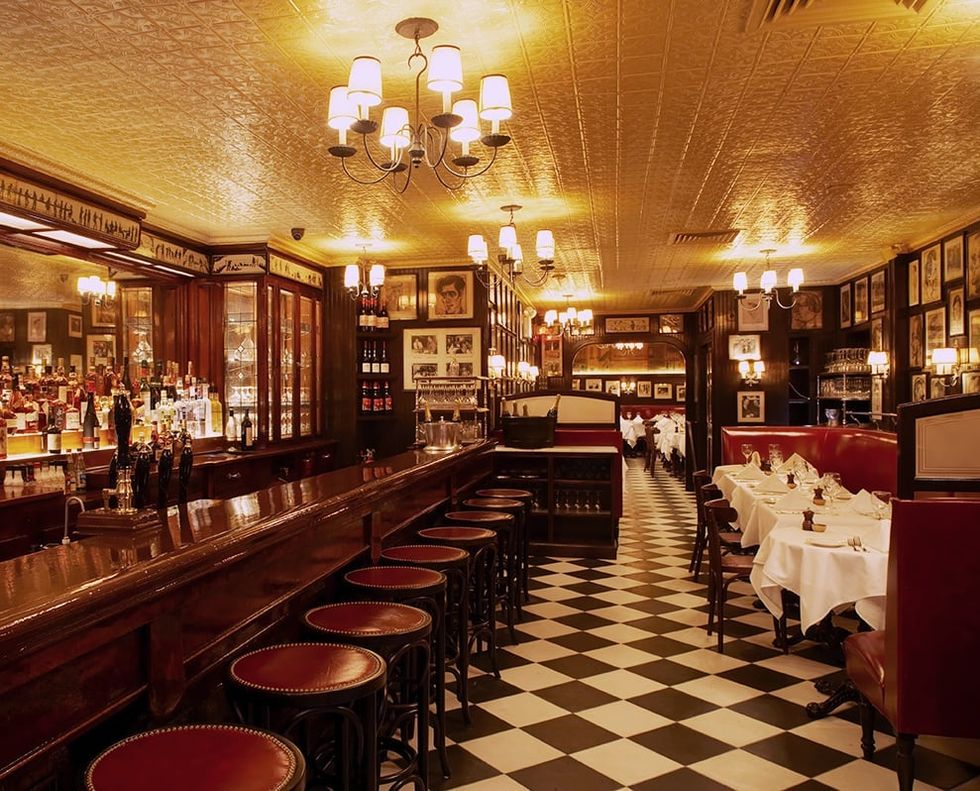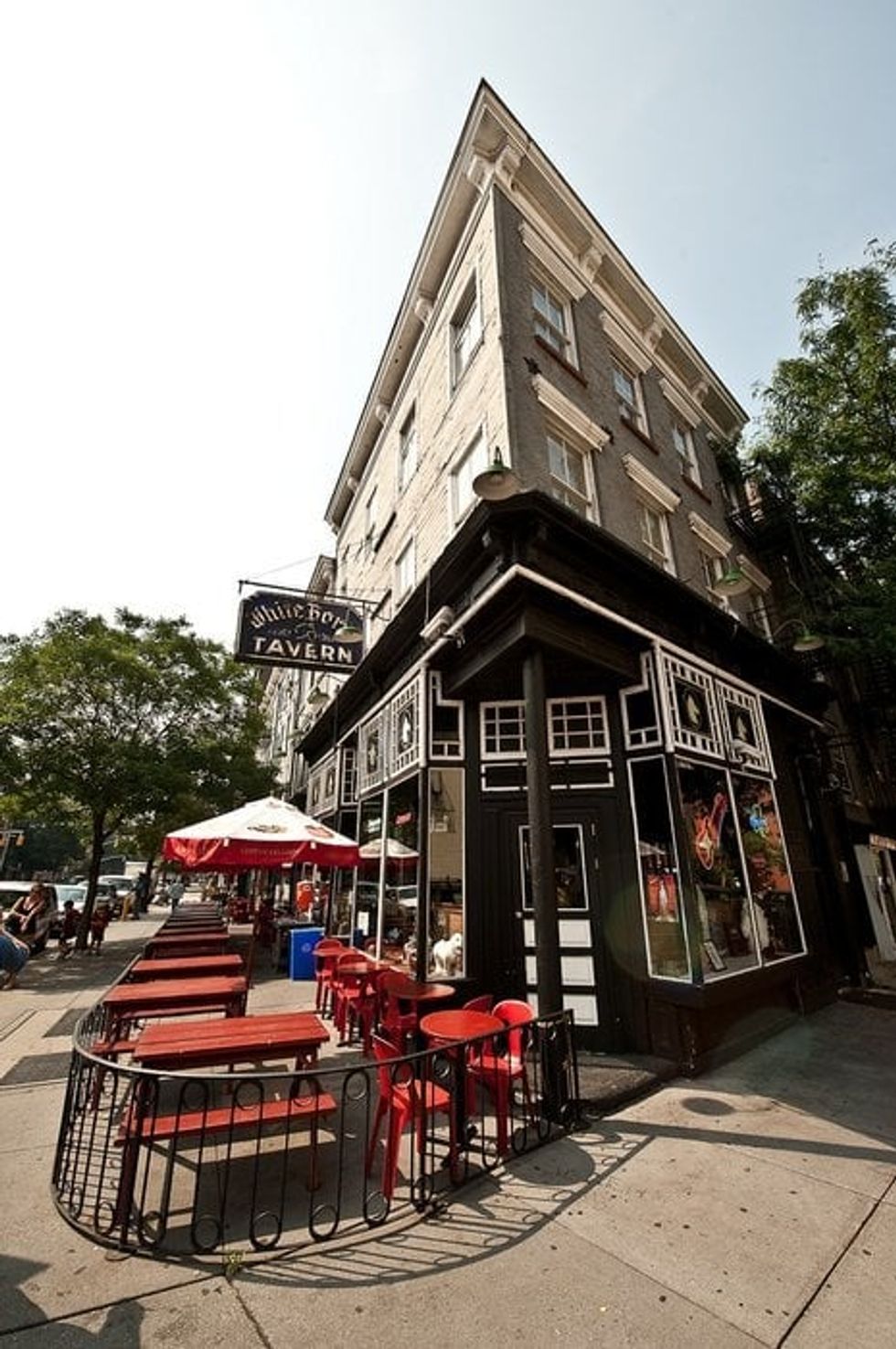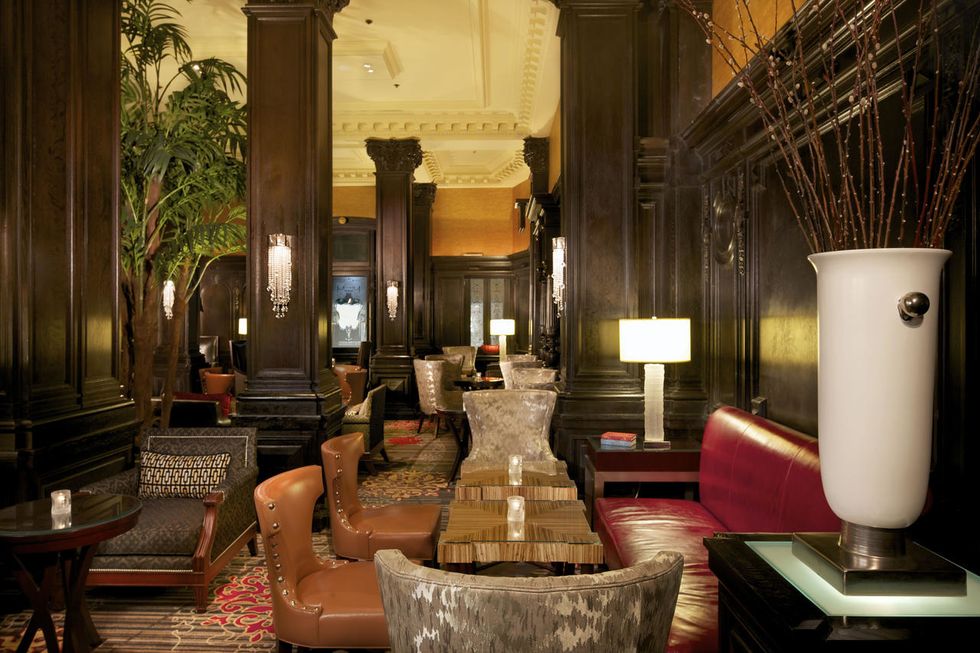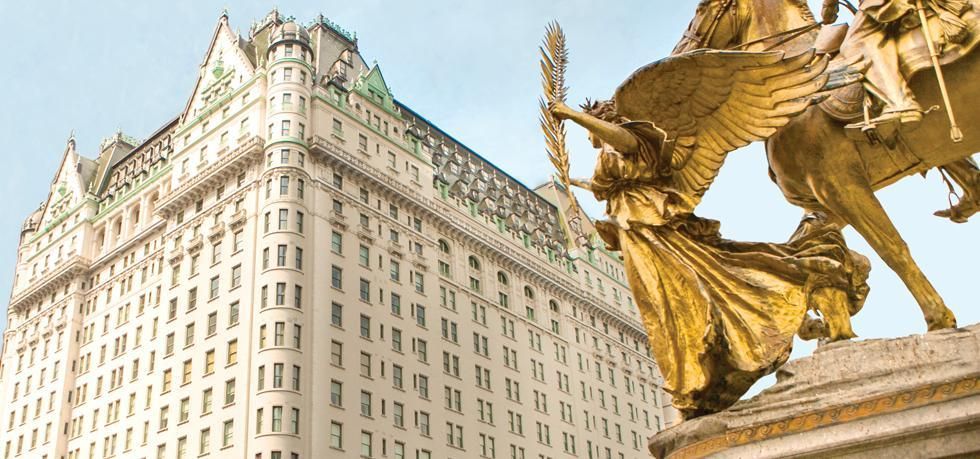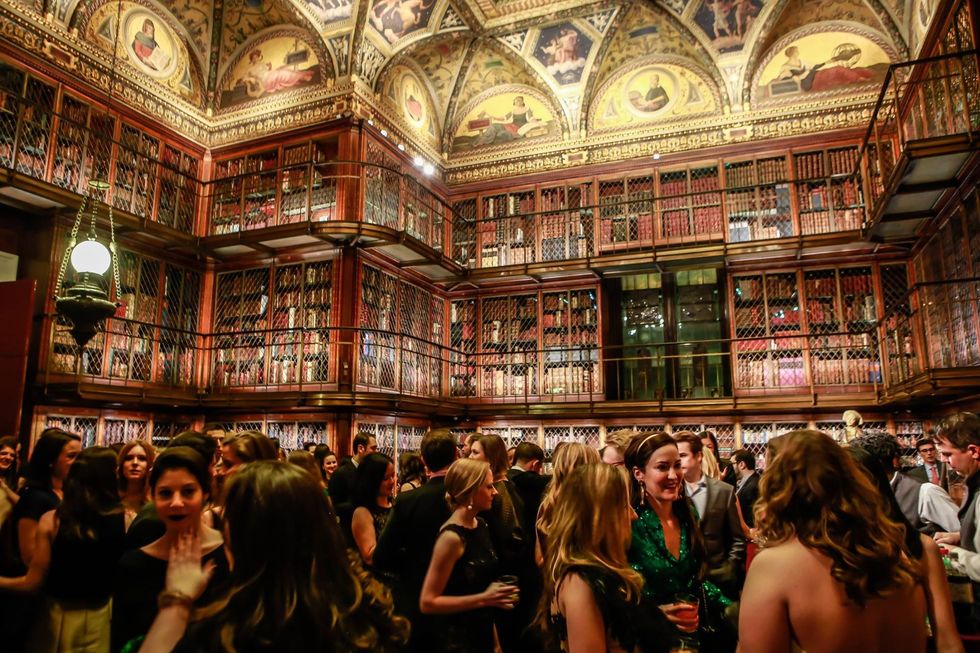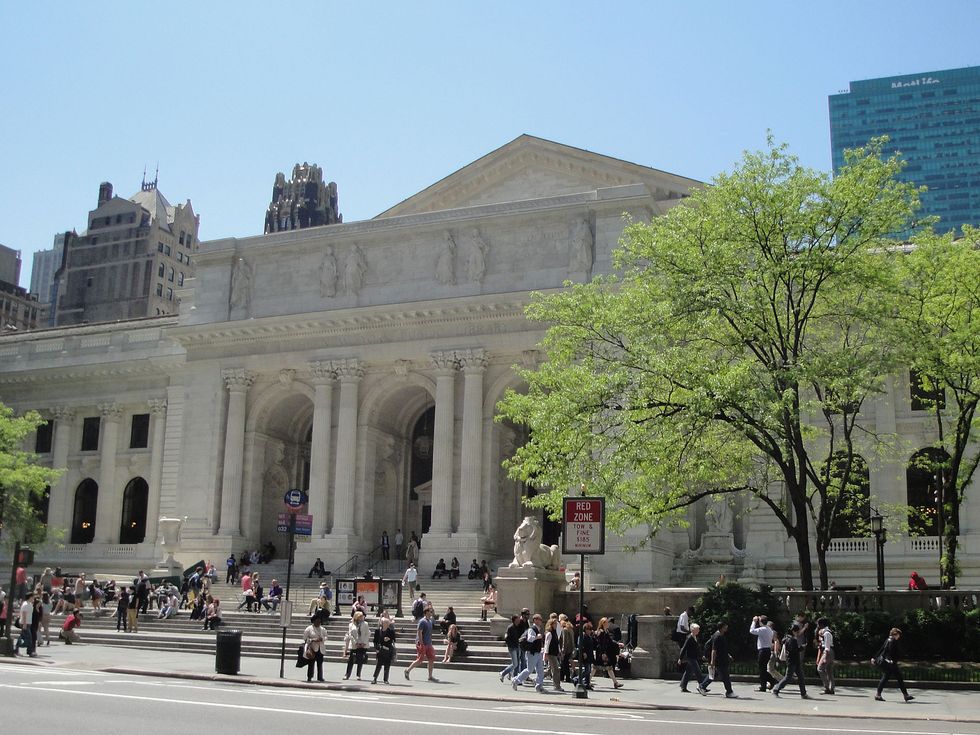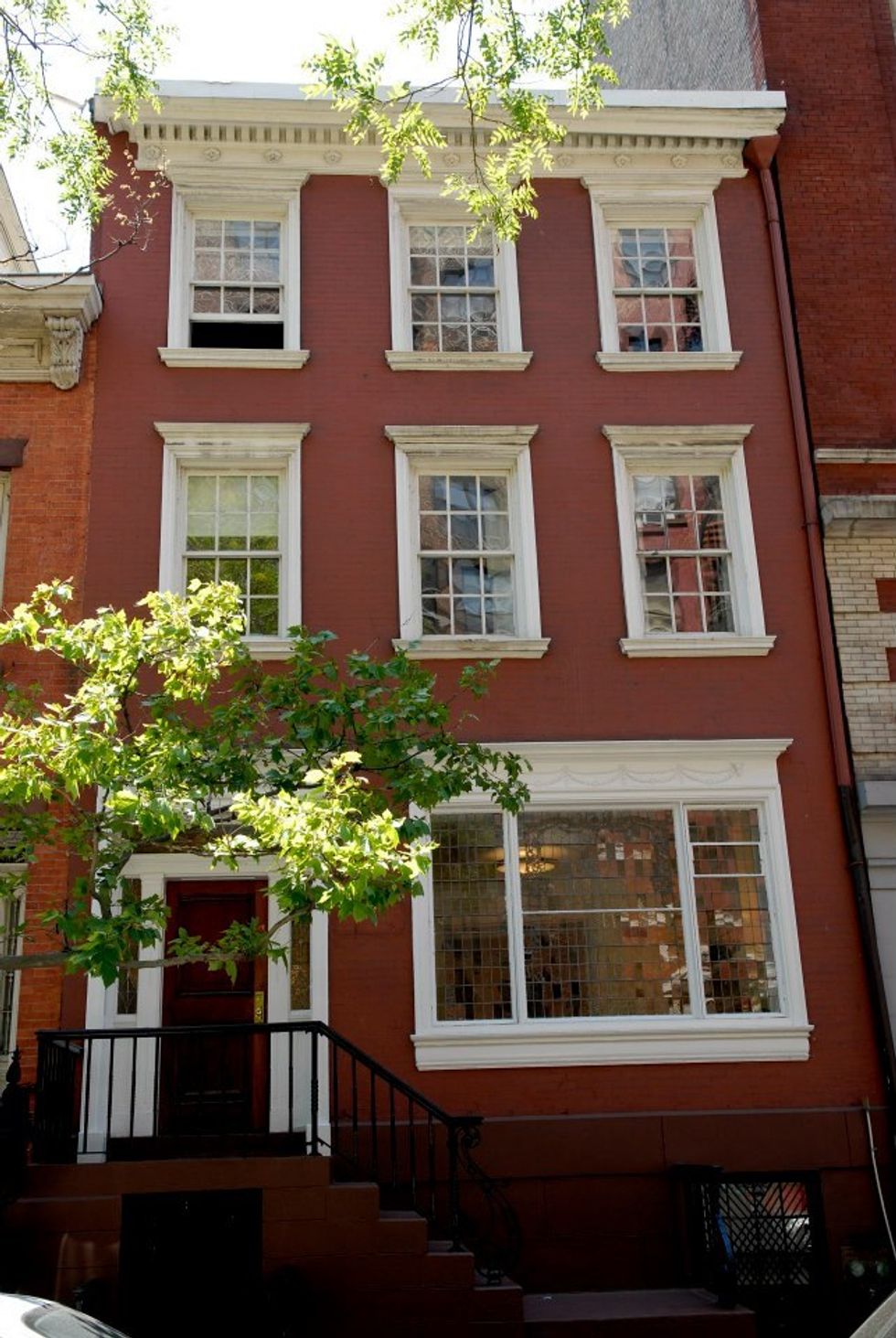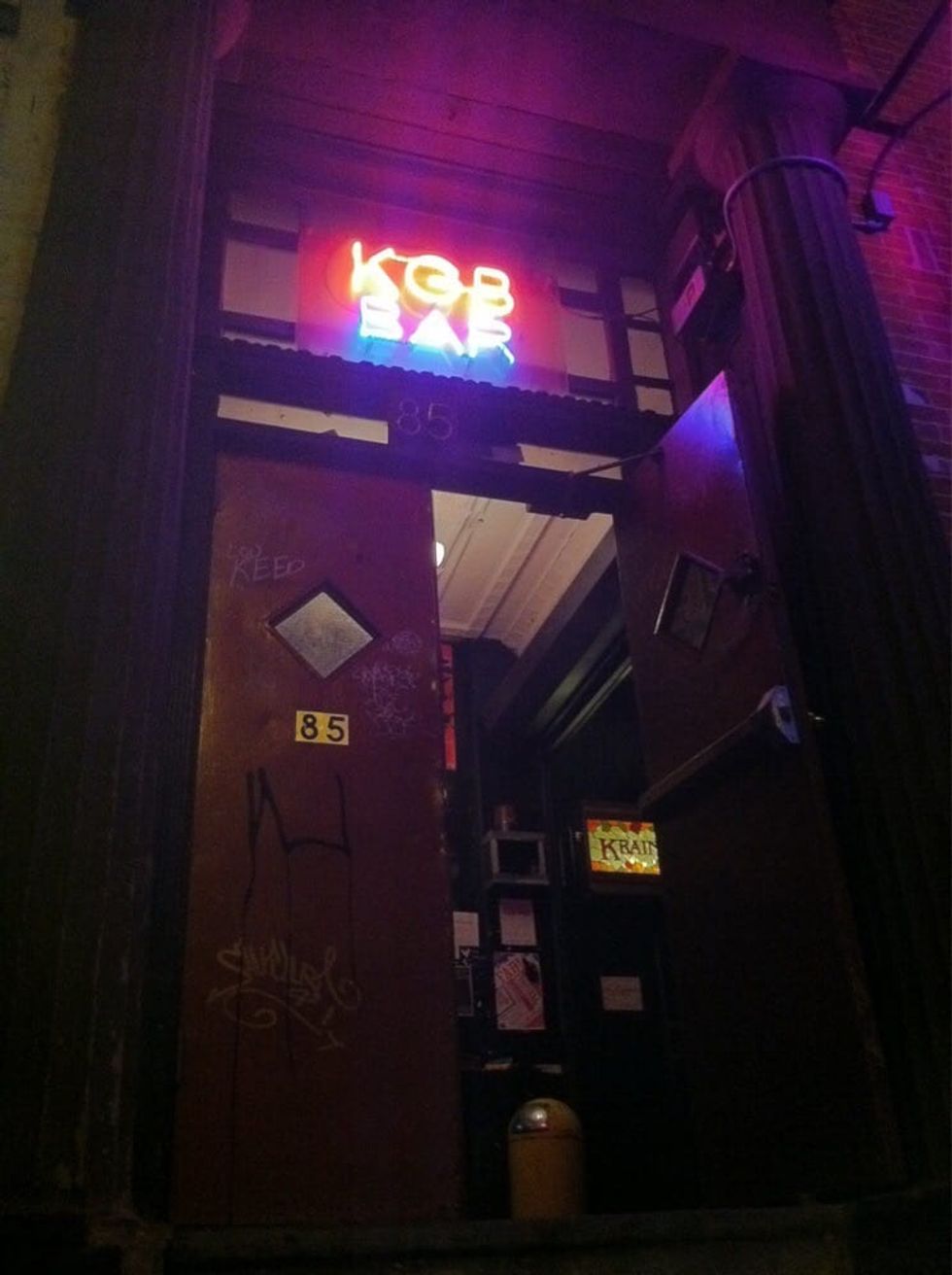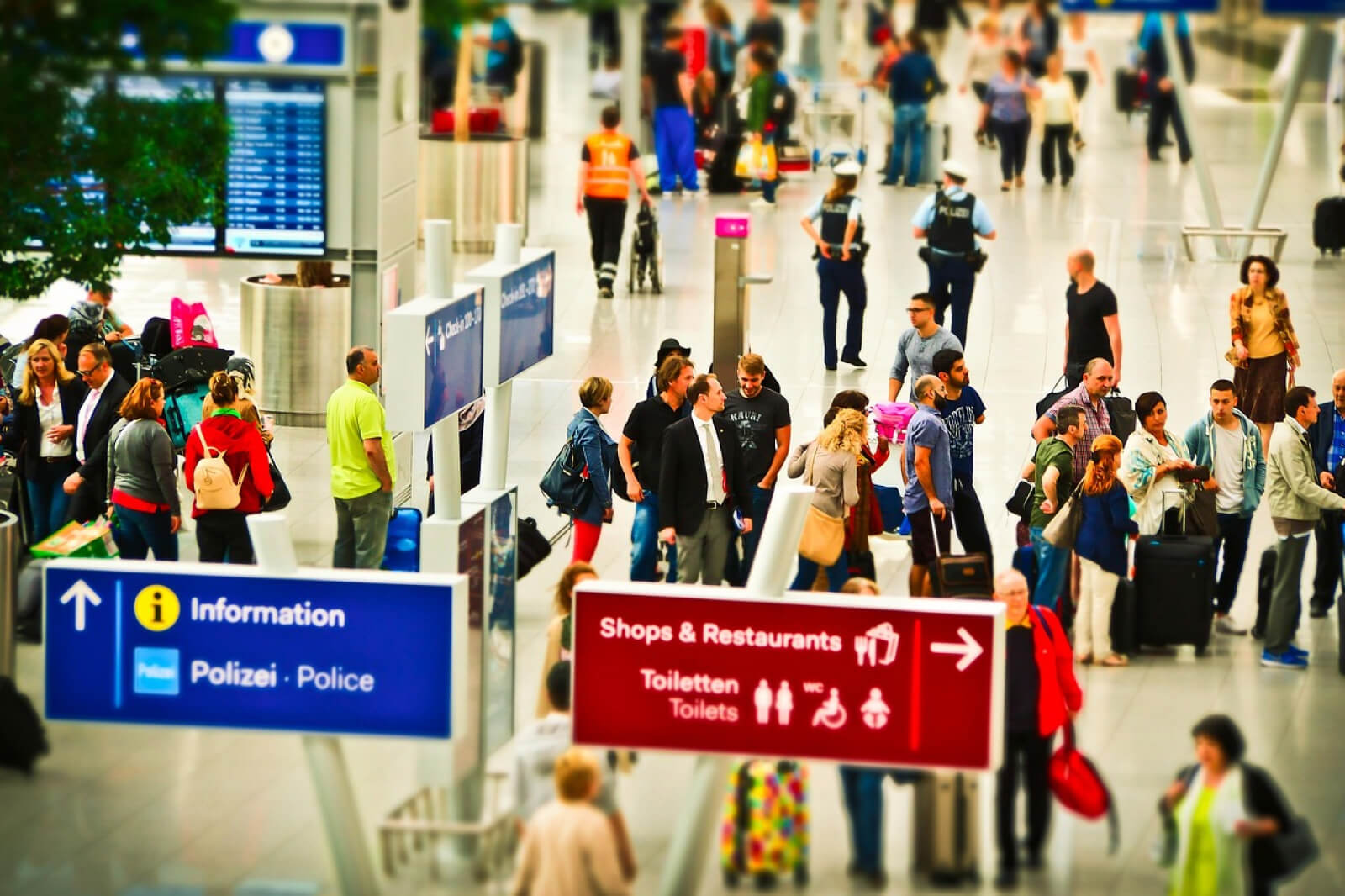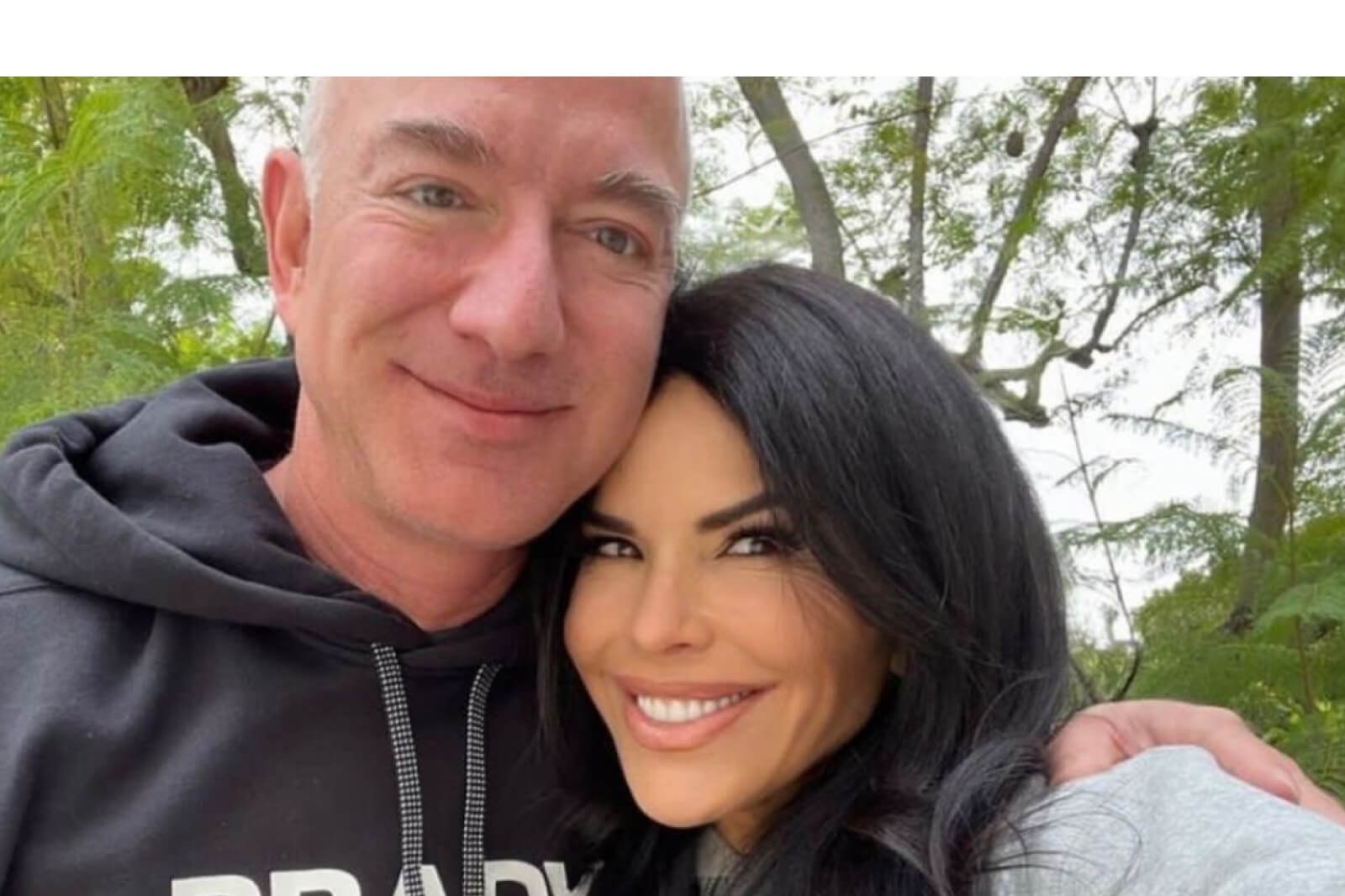
10 Essential Stops On Your Literary Tour of New York
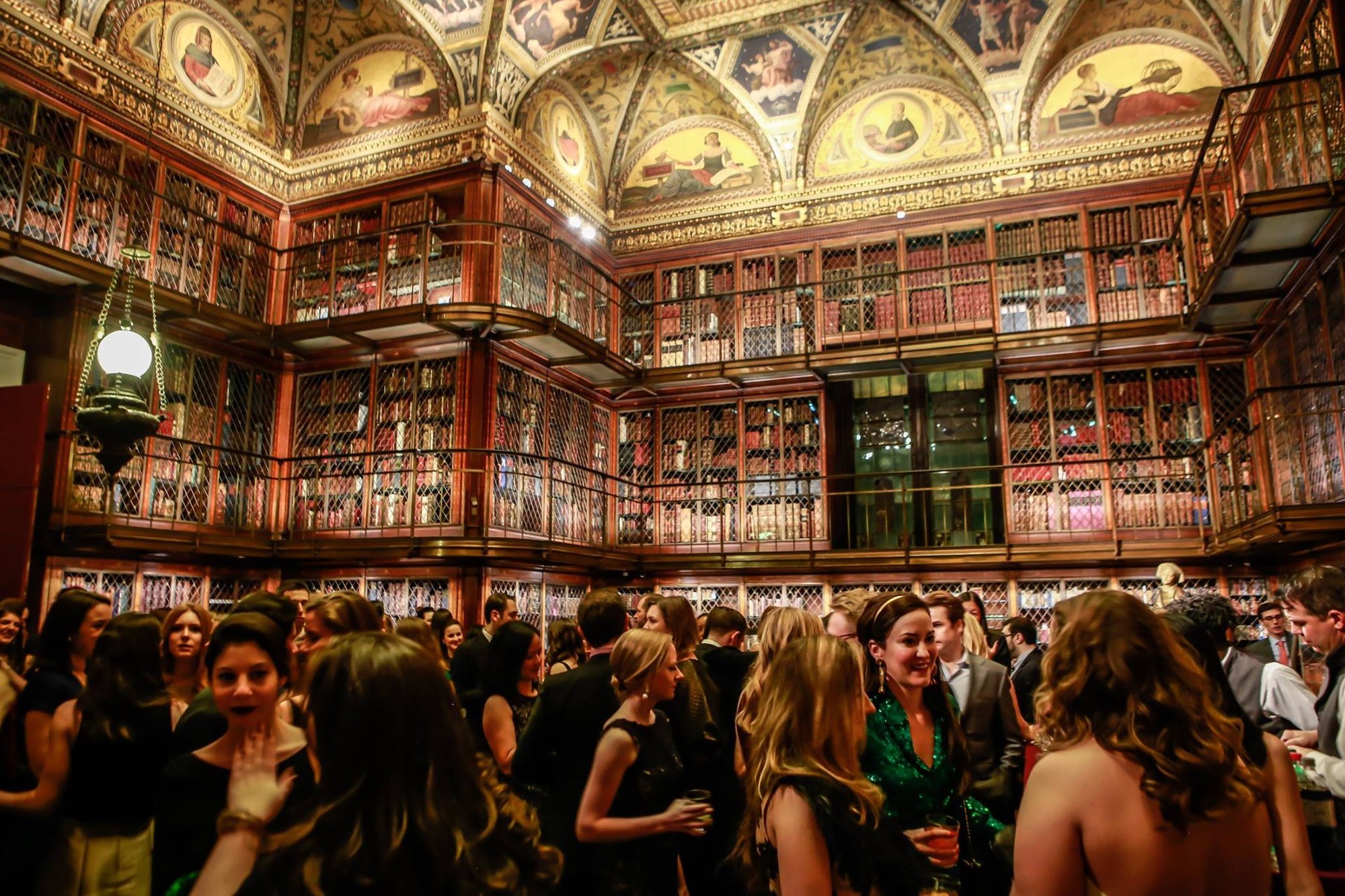

It used to be bars, not cafés, where the writing community socialized, collaborated, and gossiped. And though Greenwich Village has largely been replaced by Brooklyn (which might soon be replaced) as the writers’ neighborhood, you can still explore the history of New York City’s vibrant and important literary scene. Design the best tour around the following ten famous homes and hotels, bars, cafés, exhibits, literary scenes, and landmarks.
1. Minetta Tavern
Open since 1937, the Minetta Tavern was a favorite social spot and watering hole of such giants as Ernest Hemingway, Ezra Pound, Dylan Thomas and E. E. Cummings. It was also the semi-home of the eccentric scrounger Joe Gould, subject of a famous New Yorker Profile by Joseph Mitchell. It was the birthplace of Reader’s Digest and has now become a Michelin-star-rated restaurant after renovations in 2009. You won’t find the cheap drinks enjoyed by early-20th-century writers but you will be able to order duck breast and a $33 burger while you analyze Ezra Pound’s poetics and crackpot monetary theories. (Or not.)
2. White Horse Tavern
No renovations here, just the gorgeous bar/restaurant that first opened its doors in 1880.
The White Horse Tavern numbered Dylan Thomas among its regulars; according to legend, the Welsh poet drank himself to death here with eighteen shots of whiskey. Other famous patrons include James Baldwin, Norman Mailer, Jack Kerouac (someone carved “Go home, Kerouac!” in the bathroom), and Frank O’Hara. Soak up the ambience but don’t try to beat Thomas’s record – especially if you want to make it any further on your tour.
3. The Algonquin
The Algonquin opened in 1902, when a single room cost $2 per night. Located on W. 44th Street – the original offices of The New Yorker are just across the street – it was the home of the famous Round Table, where writers and artists met and conversed for what documentary filmmaker Aviva Slesin called “The Ten-Year Lunch.” Members of the elite group included Dorothy Parker, Robert Sherwood, Alexander Woollcott and Edna Ferber. John F. Kennedy once said, “When I was growing up, I had three wishes – I wanted to be a Lindbergh-type hero, learn Chinese, and become a member of the Algonquin Round Table.” Were he alive today and could see the lobby of The Gonk, Kennedy might well change his mind. The hotel’s been renovated any number of times over the years, and its current manifestation is a spectacle of garish vulgarity with no sense of history. Where’s the Round Table? In storage? If you visit, raise a glass and toast the memory of a once-great hotel.
4. The Plaza
A stone’s throw from Central Park, The Plaza Hotel has hosted several famous literary events since it opened in 1907. Truman Capote’s epochal Black & White Ball was held here in 1966. And what better defines luxury and vitality than serving as one of the settings for F. Scott Fitzgerald’s jazz age novel The Great Gatsby? Five decades later the Plaza turned up in Alfred Hitchcock’s spine-tingling North by Northwest. That’s some serious street cred. Generations of kids know the Plaza as the home of Eloise, the beloved character of children’s fiction.
5. Gramercy Typewriter Company
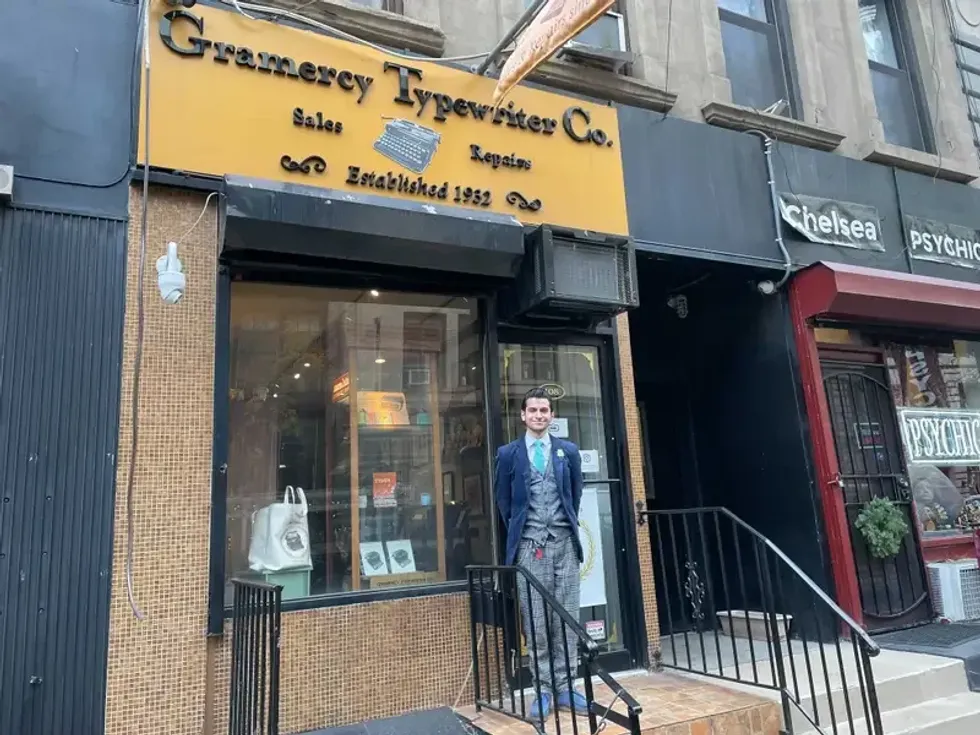
In between eating, drinking, and carousing writers actually do something: they write. Some tap away at computers or monologue into their phones. Some will only write on legal pads or index cards. Some find inspiration in the intoxicating clackety-clack of a typewriter. If you’re one of the latter (or are thinking about trying it out), hie thee to Gramercy Typewriter on W. 17th. Founded in 1932 by Abraham Schweitzer, Gramercy is now run by his son Paul and his grandson Jay. It’s the last typewriter store in Manhattan but, thanks to a huge leap in typewriter sales and usage thanks to COVID screen-burnout, Gramercy’s going great guns. The staff is knowledgeable, friendly, and ready to fix your old machine or help you find a new one. May Gramercy last forever!
6. Morgan Library
In between food and drinks, stop at the Morgan Library and Museum for a glance at Robber Baron J. P. Morgan’s magnificent collection of illuminated, literary, and historical manuscripts, early printed books, and old master drawings and prints. Past exhibitions have been dedicated to Henry David Thoreau, Edgar Allan Poe, and Tennessee Williams. For more on the stunning Morgan Library and its prizes, including a Gutenberg Bible, check out The Journiest Profile.
7. New York Public Library
Ah, the grandeur and the glory of the NYPL. Built on the site of the old Croton Distributing Reservoir, the library’s truly one of the reasons why New York City is – admit it – the greatest city on earth. Its vast array of titles, its Manuscripts, Archives and Rare Books division, and its Beaux-Arts architecture are only a few of its outstanding qualities. As is a certain bear and his companions: the Schwarzman Building at 5th and 42nd houses the actual Winnie the Pooh, Tigger, Kanga and Roo stuffed toys once owned by Christopher Robin, son of Pooh’s creator A. A. Milne. While you’re there, take a moment to relax in peace in the beautiful and finally renovated Rose Main Reading Room. An oasis of calm literacy since 1911.
8. Lillian Vernon Creative Writers House
The Lillian Vernon Creative Writers House on West 10th Street was built in 1836 and has a vast artistic history over almost two centuries. Situated in a neighborhood whose past residents—scribes such as Mark Twain, Willa Cather, Richard Wright, and Marianne Moore—are often listed in metal plates next to their front doors, the Writers House is currently home to a weekly reading series hosted by NYU. It became the hub of NYU’s creative writing program in 2007 and has hosted authors such as Zadie Smith, Joyce Carol Oates, Michael Cunningham, and Charles Simic. Their reading series continues, free and open to the public on most Thursday and Friday evenings.
9. Fountain Pen Hospital
The Fountain Pen Hospital is another mecca for writers who have tired of the cyber world and want a warmer, more human experience when putting ink on paper. Like the typewriter, the fountain pen is not only a brilliantly-designed tool – it’s also an aesthetically pleasing object that one can easily obsess over. Tribeca’s FPH has been selling and repairing pens since 1946, so there’s nothing they don’t know about nibs, caps, barrels, converters, sections, and ink. They specialize in a huge variety of contemporary pens but also offer a nicely curated selection of vintage brands. If you stop in, say hello to Marv, one of the Hospital’s ace team of doctors.
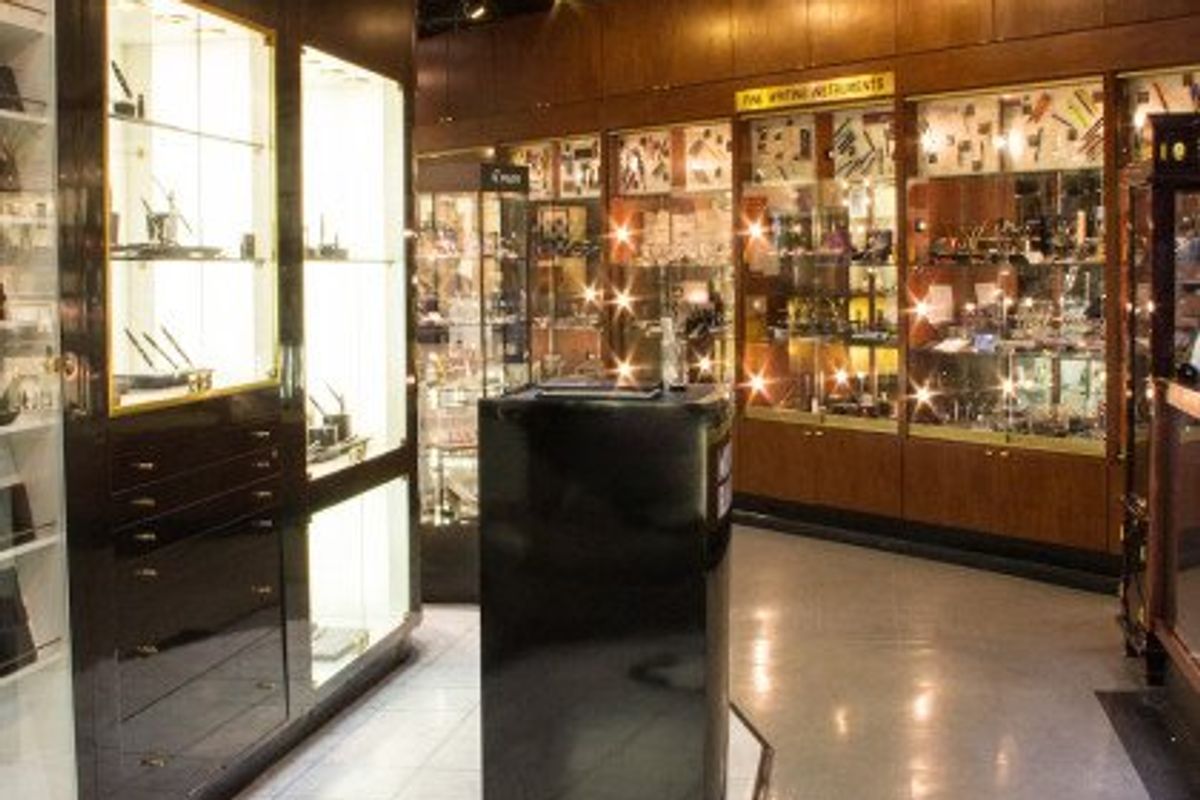
10. KGB Bar
The KGB Bar might be a bit difficult to find, and you might think its dark, Russian-themed bar doesn’t seem like the most social of places to meet writers and talk books. You’d be wrong, though – KGB hosts a ton of fiction and poetry readings in its tiny space. It’s so devoted to the literary scene that it publishes its own online literary journal. Once a month, on the third Thursday, the bar hosts the “Drunken! Careening! Writers!” reading series, where both nascent and established pen-wielders share their work. Arrive early for a seat at one of several tables or grab a seat at the bar and admire the barely-lit Russian memorabilia hanging on the walls.
Don’t forget:
Other fabulous stops include: The Strand, Housing Works Cafe & Bookstore, Overlook Lounge, the Library Hotel, McSorley’s Old Ale House, and Old Town Bar.
- algonquin
- bars
- book tour of new york
- bookstores
- eat like famous new york writers
- famous writers bars new york
- famous writers of new york
- hotels
- kgb bar
- lillian vernon
- literary tour of new york
- literature history of new york
- minetta tavern
- morgan library and museum
- new york city
- new york city literary history
- new york public library
- restaurants
- white horse tavern
- writers
- writers bars new york
